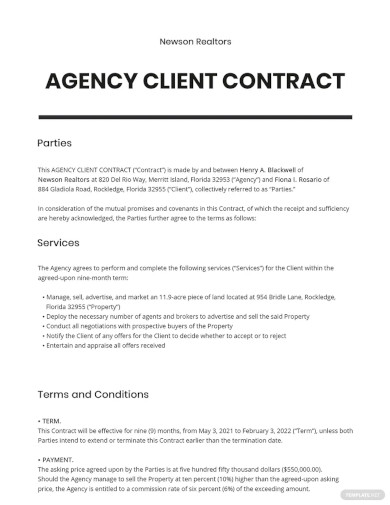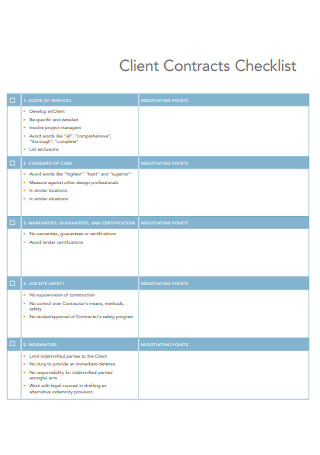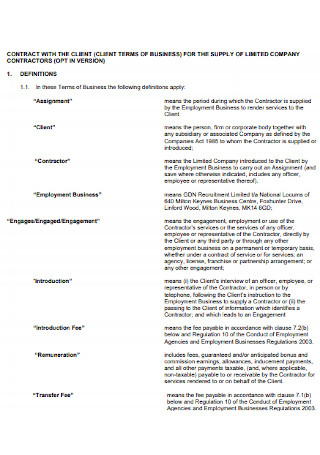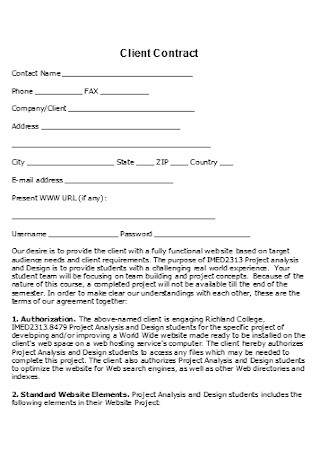Client Contract
-

Free Agency Client Contract Template
download now -

Advertising Agency Client Contract Template
download now -

Sample Client Therapist Contract
download now -

Sample Client Contract Template
download now -

Client Contract Form Template
download now -

Sample Attorney Client Contract Template
download now -

Client Contracts Checklist Template
download now -

Client Therapy Program Contract
download now -

Simple Client Contract Template
download now -

Client Information Sheet Contract
download now -

Client Contract and Lodging Agreement Template
download now -

Client Business Contract
download now -

Therapeutic Consent and Client Contract Template
download now -

Sample Virre Client Contract
download now -

Client Service Contract Template
download now -

Standard Client Contract Template
download now -

Project Lifesaver Contract With Client
download now -

Contingency Client Contract
download now -

Momentum Counselling Client Contract
download now -

Client Contract and Informed Consent Template
download now -

Client Contract Application Template
download now -

Termination of a Client-Consultant Contract
download now -

Psychologist Client Contrast for Individual Therapy
download now -

Formal Client Contract Template
download now -

Printable Client Contract Template
download now -

Client Contract Update Request Template
download now -

Client Contract Format
download now -

Project Client Contract Template
download now
FREE Client Contract s to Download
Client Contract
What Is a Client Contract?
Tips for Establishing a Stronger Relationship With Your Client
How To Construct an Effective Sample Client Contract
FAQs
What does the term “notice” mean?
What is an independent contractor?
How does a service agreement differ from an employment contract?
What Is a Client Contract?
When entering into a deal with your client, you may sometimes think that it is okay to finish it off with a handshake. Well, that may apply to some light arrangements but not with more substantial agreements. A client contract will protect you and your business in case issues arise between you and your client. For example, a coach who offers personal training for a well-known fitness company or gym needs to have a written agreement with his client concerning the term of the services he will provide. The client can’t complain about not receiving the personal trainer’s services once the term is over. Moreover, a client contract can also come in the form of a service agreement, but the details of each contract will depend on what kind of service you provide. Your business may fall into one of the different service industries, such as wellness, healthcare, insurance, finance, professional services, design, and more.
According to Statista, in 2017, the fitness industry’s worth, specifically the fitness category, amounted to $595.4 billion.
When we talk about the insurance industry, in 2018, there were about 773 life insurers in the United States.
In the world of design, in 2019, the total revenue of the graphic design industry reached about $15 billion.
Tips for Establishing a Stronger Relationship With Your Client
Building a good relationship with your client goes beyond following what a contract states; it involves listening and serving your client with a sincere heart. Note that growing your business also means strengthening your relationship with your client. You may not see it, but a client who is satisfied with your service may refer you to another customer. With that said, here are some tips for establishing a better connection with your client.
How To Construct an Effective Sample Client Contract
The purpose of a contract is to ensure that the parties involved have the same goal in mind. The parties must agree about how the whole project will proceed. The following are steps on how to create a simple contract example.
Step 1: Write Some Important Background Information
Your contract format should include some vital background information about you and your client. This information includes your legal names and addresses. Also, use the official name of your business in the paperwork. Moreover, instead of using generic terms (e.g., service provider), use your legal name or your customer’s name on the entire contract.
Step 2: Include the Project Details
Be specific about your duties and responsibilities as a service provider. For example, a client hires you to ensure that his office follows the laws of ergonomics. As a physical therapist, you should write the scope of your service. Which areas of the office do you have to modify? Who will provide the materials needed for the modification? What are the materials required? The goal is to make a project guideline so that the work will go smoothly between you and your client.
Step 3: Specify the Terms for Payment
How will the client pay you? Will it be on an hourly basis or by project basis? If you want your client to pay you hourly, write your maximum work hours. If you want it to be on a per-project basis, state clearly what you have to deliver. Also, set the schedule for payment. For an hourly basis, you can request for payment per week or month. For project-based payments, you may need to provide an sample invoice for every milestone. The client may pay you after he gets an account every 15 or 30 days. Moreover, include the acceptable methods for payment, and don’t forget to write the penalties for non-payment.
Step 4: Set the Deadlines
Every process a particular project undergoes must have a deadline. As we’ve mentioned earlier, you and your client have deadlines to meet, so be specific about it. For example, client A must submit the requirements so service provider B can proceed with the next procedure.
Step 5: Decide on the Conditions for Termination
Typically, for employee contracts, both parties can terminate their agreement after two weeks’ notice. However, for client contracts, the conditions for termination depend on every case. To protect yourself, include a statement about fees that are non-refundable once paid.
Step 6: Choose a Governing Law
You can choose which state laws you want to govern or rule over your client or customer contract in case disputes arise. Choosing a governing law will be helpful, especially if your client comes from a different state. If you don’t have a reason to pick a different state, it is better to select the laws of your state. Traveling outside your state to resolve a conflict can be expensive and can cost you a lot of time.
FAQs
What does the term “notice” mean?
Notice is the spare time one party provides another when they decide to end the agreement before the exact end date. A notice gives a service provider time to find another employer or give a client some time to find another service provider. For independent contractors, there is no law to protect them regarding this matter unless written in the contract. Nevertheless, courts may consider a case where an independent is wholly dependent on the client. In such a situation, courts may demand a specific notice period.
What is an independent contractor?
Independent contractors offer services in return for payment, but they are not like employees under the control of an employer. Independent contractors practice their trade, and some examples include plumbers, construction workers, graphic designers, accountants, engineers, and information technologists.
How does a service agreement differ from an employment contract?
A service agreement’s purpose is to employ independent contractors or service providers for a specific job. It is a contract that ends after project completion. An employment contract, on the other hand, is a contract utilized to hire workers or employees. It is an agreement with a longer-term compared to a service contract.
A client contract is a document that guides the relationship between a client and a company or service provider. A client contract will remind a company or service provider of his obligations towards his client. Also, it will set the responsibilities of a client towards a company or a worker. With that said, you can check one of our client contract templates above and download it for your benefit.
